Overview:
Canada is a country rich in history, with a diverse tapestry of cultures and significant events that have shaped its identity.
From ancient Indigenous sites to colonial landmarks, each location offers a unique perspective on the country’s past.
In this guide, we’ll take you through the top 15 historical sites In Canada, each offering unique insights into the country’s heritage and the people who have influenced its journey.
Whether you’re a history enthusiast or simply looking to explore, these destinations promise to enrich your understanding of Canada’s fascinating narrative.
Table of Contents
1. Old Quebec City, Quebec

Old Quebec City is a UNESCO World Heritage Site and one of the oldest cities in North America. Its cobblestone streets, well-preserved colonial architecture, and European charm make it a favorite destination for history enthusiasts.
Historical Significance: Founded in 1608 by Samuel de Champlain, Old Quebec was the center of French civilization in North America. The city played a key role in the fur trade and in the military conflicts between the French and British.
Best Time to Visit: June to September, when the weather is warm and the city hosts numerous festivals.
Travel Tips:
- Transportation: Accessible by train, bus, or car; walking around Old Quebec is easy.
- Accommodation: Stay in one of the charming boutique hotels within the historic district.
- Local Customs: The primary language spoken is French, but most locals are bilingual, making communication easy.
2. Fortress of Louisbourg, Nova Scotia
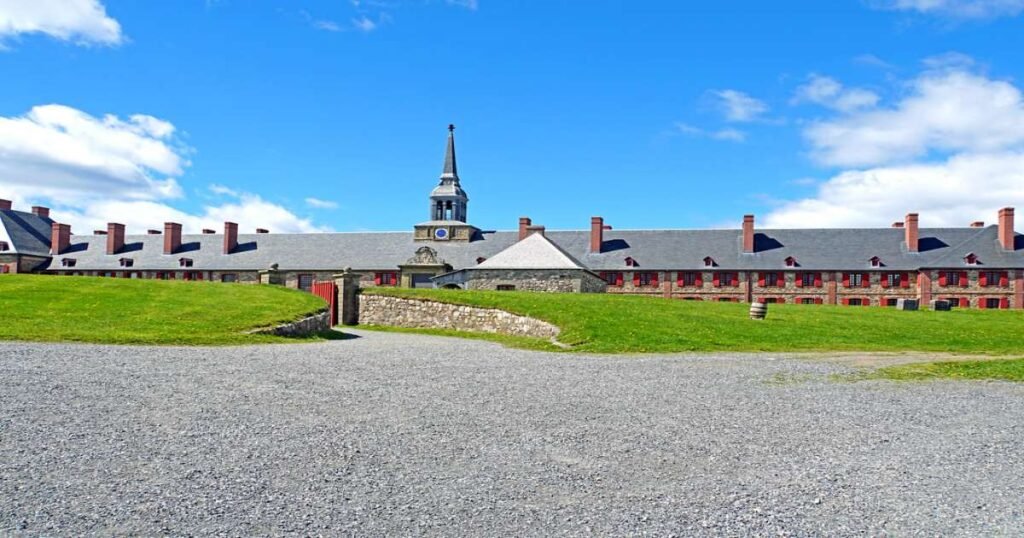
The Fortress of Louisbourg is a partial reconstruction of an 18th-century French fortress, offering visitors a unique opportunity to experience colonial military life in Canada.
Historical Significance: Built by the French in 1713, Louisbourg was one of the most important military and economic centers in New France. It played a crucial role during the Anglo-French conflicts for control over North America, particularly during the Siege of Louisbourg in 1758, which led to British dominance in the region.
Best Time to Visit: July to September, when the fortress is open for guided tours and reenactments.
Travel Tips:
- Transportation: Located on Cape Breton Island, reachable by car or ferry.
- Accommodation: Stay in nearby Sydney or book a historic inn on Cape Breton Island.
- Local Customs: Participate in the interactive experiences where costumed staff reenact daily life from the 1700s.
3. L’Anse aux Meadows, Newfoundland and Labrador

L’Anse aux Meadows is the only known Viking settlement in North America and a UNESCO World Heritage Site. This archaeological site offers a rare glimpse into Norse exploration of the continent over 1,000 years ago.
Historical Significance: Dating back to the 11th century, L’Anse aux Meadows is believed to be the Vinland settlement mentioned in the Viking sagas. The discovery of this site confirmed that Vikings were the first Europeans to reach North America, long before Columbus.
Best Time to Visit: June to September, when the site is open and the weather is mild.
Travel Tips:
- Transportation: Located at the northern tip of Newfoundland, reachable by car or guided tours.
- Accommodation: Stay in the nearby village of St. Anthony, where you can also enjoy whale-watching tours.
- Local Customs: Explore the visitor center for insights into Viking history and archaeology.
4. Rideau Canal, Ontario
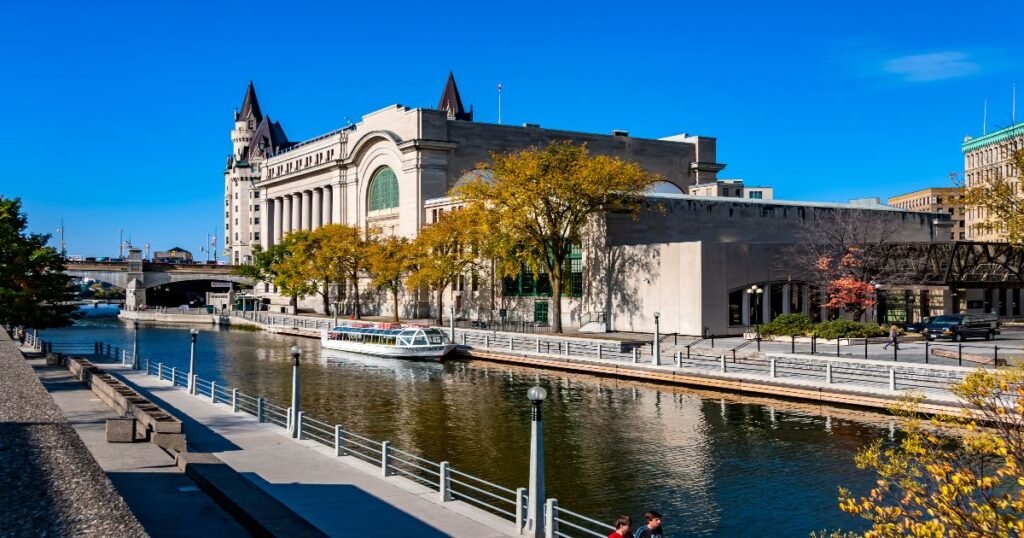
The Rideau Canal is a historic waterway that stretches 202 kilometers from Ottawa to Kingston. Built in the early 19th century, it is now a UNESCO World Heritage Site and a popular recreational area.
Historical Significance: Constructed between 1826 and 1832, the Rideau Canal was designed to provide a secure supply route between Montreal and the Great Lakes in the event of war with the United States.
Best Time to Visit: May to October for boat tours, or January to February when the canal transforms into the world’s largest skating rink.
Travel Tips:
- Transportation: Accessible by car or bus; boat tours are available during the warmer months.
- Accommodation: Stay in Ottawa or Kingston for easy access to the canal.
- Local Customs: Rent a canoe or kayak to explore the canal up close, or skate on it in the winter.
5. Banff Springs Hotel, Alberta
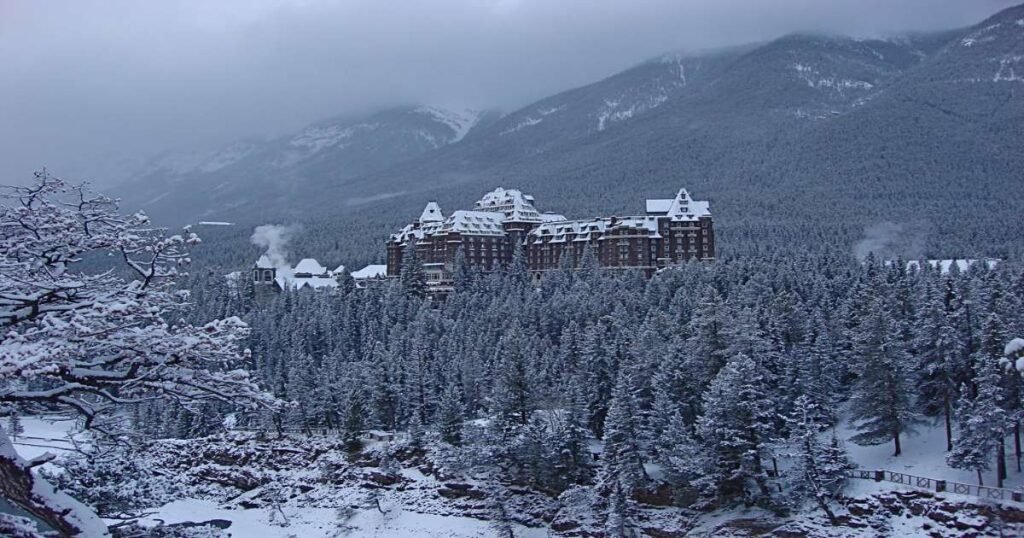
The Banff Springs Hotel is a luxurious historic hotel located in the heart of the Canadian Rockies. Known as the “Castle in the Rockies,” this grand structure has been welcoming guests since 1888.
Historical Significance: The Banff Springs Hotel was built by the Canadian Pacific Railway to promote tourism in the Rockies and to attract wealthy travelers. It played a significant role in the development of Banff National Park, Canada’s first national park.
Best Time to Visit: June to September for hiking and sightseeing, or December to March for skiing and winter activities.
Travel Tips:
- Transportation: Accessible by car or shuttle from Calgary.
- Accommodation: Stay at the hotel itself for a luxurious experience, or choose nearby lodges in Banff.
- Local Customs: Take advantage of the hotel’s guided tours to learn about its history and architecture.
6. Canadian Museum of History, Quebec

The Canadian Museum of History, located in Gatineau, Quebec, across the river from Ottawa, is one of the most visited museums in Canada. It explores over 20,000 years of human history in Canada, with a focus on Indigenous peoples.
Historical Significance: The museum’s exhibits trace the evolution of Canadian society from ancient Indigenous civilizations to the modern era. It houses the world’s largest indoor collection of totem poles and highlights Canada’s diverse cultural heritage.
Best Time to Visit: Year-round, though spring and summer are ideal for combining your visit with outdoor activities in the National Capital Region.
Travel Tips:
- Transportation: Easily accessible by car, public transit, or by walking from downtown Ottawa.
- Accommodation: Stay in downtown Ottawa or Gatineau for easy access.
- Local Customs: Spend time in the Grand Hall to view the impressive totem poles and Indigenous artifacts.
7. Notre-Dame Basilica, Montreal, Quebec

The Notre Dame Basilica of Montreal is one of the most famous churches in North America, renowned for its stunning Gothic Revival architecture and dazzling interior.
Historical Significance: Built in the early 19th century, the basilica has been a center of Montreal’s Catholic community for over 200 years. Its intricate wood carvings, vibrant stained glass windows, and historical significance make it one of Canada’s architectural gems.
Best Time to Visit: April to October, when the weather is pleasant for exploring the city.
Travel Tips:
- Transportation: Accessible by metro, bus, or on foot in Old Montreal.
- Accommodation: Stay in Old Montreal for proximity to the basilica and other historical sites.
- Local Customs: Attend an evening light show to see the basilica’s stunning interior illuminated in a unique way.
8. Halifax Citadel, Nova Scotia
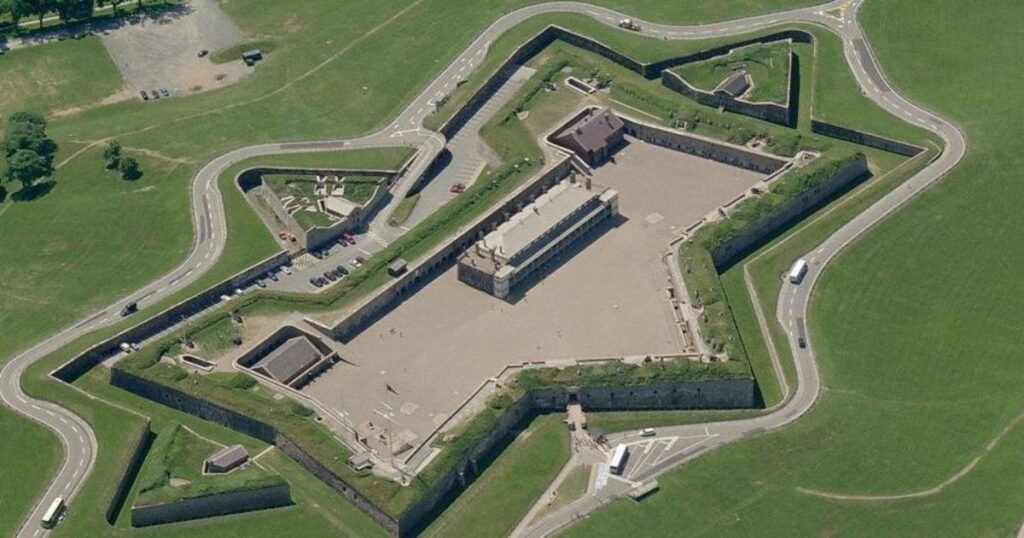
The Halifax Citadel is a star-shaped fortress that overlooks the city of Halifax. It is one of Canada’s most visited National Historic Sites and offers a glimpse into the city’s military history.
Historical Significance: Built-in 1749 to defend the city’s strategic harbor, the Citadel has witnessed numerous conflicts, including during the Seven Years’ War and the American Revolution. Today, it serves as a museum where visitors can learn about Halifax’s military past.
Best Time to Visit: May to October, when the Citadel hosts reenactments and military demonstrations.
Travel Tips:
- Transportation: Located in downtown Halifax, easily accessible by car or public transit.
- Accommodation: Stay in one of Halifax’s many hotels, located close to the harbor.
- Local Customs: Don’t miss the daily firing of the noon cannon, a tradition that dates back to the Citadel’s early days.
9. Royal Ontario Museum, Ontario

The Royal Ontario Museum (ROM) in Toronto is one of the largest museums in North America. It offers an extensive collection of art, world culture, and natural history exhibits.
Historical Significance: Opened in 1914, the ROM has played a vital role in preserving and showcasing Canada’s cultural heritage, as well as significant artifacts from around the world. Its collections include everything from dinosaur fossils to Indigenous art.
Best Time to Visit: Year-round, though summer months allow you to explore other outdoor attractions in Toronto.
Travel Tips:
- Transportation: Located in downtown Toronto, accessible by subway, bus, or on foot.
- Accommodation: Stay in downtown Toronto for easy access to the museum and other cultural sites.
- Local Customs: Take your time exploring the extensive exhibits and consider a guided tour for deeper insights into the museum’s collections.
10. St. John’s Signal Hill, Newfoundland and Labrador
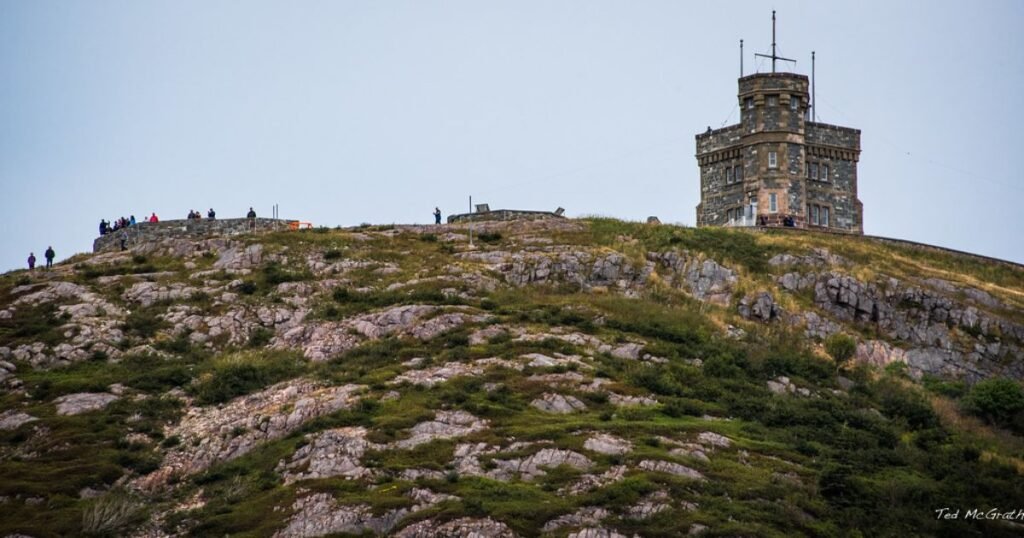
Signal Hill, located in St. John’s, Newfoundland, is a historic site that offers panoramic views of the city and the Atlantic Ocean. It played a key role in military communications and defense.
Historical Significance: Signal Hill is famous for being the site where Guglielmo Marconi received the first transatlantic wireless signal in 1901. It also served as a strategic military lookout during conflicts such as the Napoleonic Wars and World War II.
Best Time to Visit: June to September, when the weather is mild and outdoor activities are more enjoyable.
Travel Tips:
- Transportation: Accessible by car or on foot via hiking trails from St. John’s.
- Accommodation: Stay in St. John’s for convenient access to Signal Hill and other local attractions.
- Local Customs: Visit the interpretation center to learn about the site’s military history and the significance of Marconi’s achievement.
11. Prince of Wales Fort, Manitoba
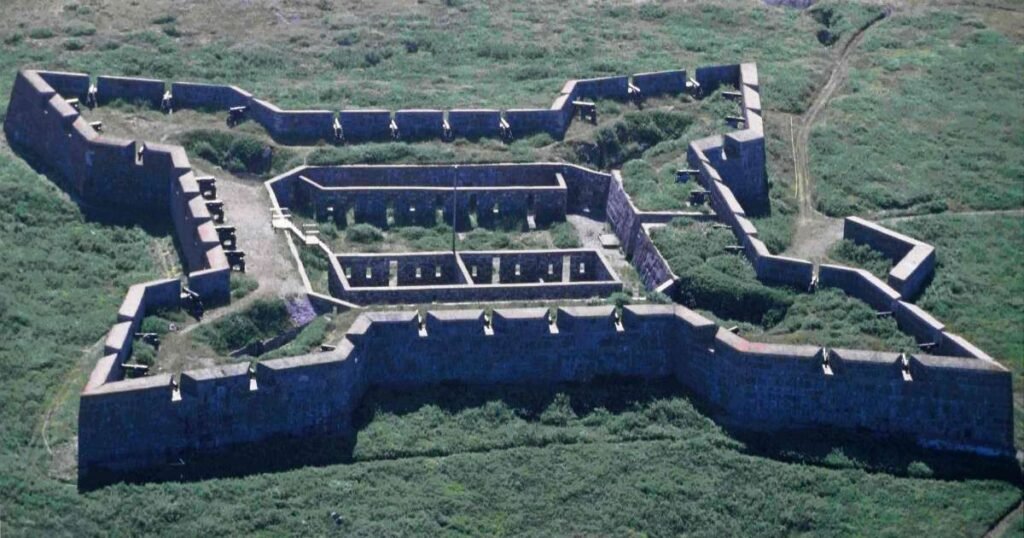
The Prince of Wales Fort, located on the shores of Hudson Bay, is a stone fort built in the 18th century. It stands as a reminder of the fur trade era in Canada’s early history.
Historical Significance: Built by the Hudson’s Bay Company between 1731 and 1771, the Prince of Wales Fort was a trading post and military fortification. It was captured by the French in 1782 but later abandoned.
Best Time to Visit: July to September, as the area experiences harsh winters.
Travel Tips:
- Transportation: Accessible only by air or boat from Churchill, Manitoba.
- Accommodation: Stay in Churchill, a hub for visitors to the fort and for polar bear watching.
- Local Customs: Visit during the summer for a guided tour, or pair your trip with a northern lights viewing in winter.
12. Fort Garry, Manitoba
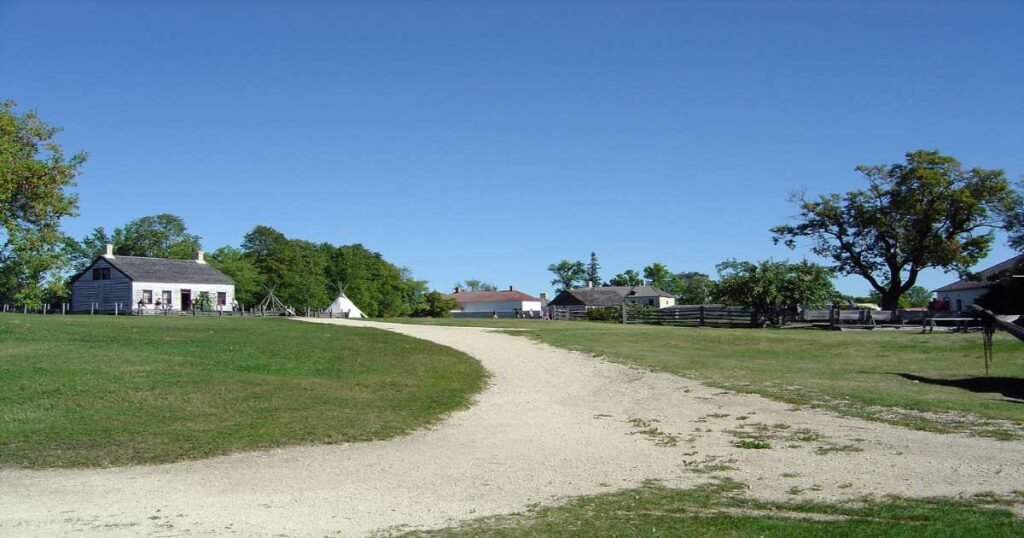
Lower Fort Garry, located near Winnipeg, is an iconic Hudson’s Bay Company fort that was used for fur trading and as a treaty negotiation site with Indigenous peoples.
Historical Significance: Built-in 1830, Lower Fort Garry played a significant role in the fur trade, and it was also the site of Treaty 1 negotiations between the Crown and Indigenous peoples in 1871.
Best Time to Visit: May to September, when costumed interpreters reenact daily life at the fort.
Travel Tips:
- Transportation: Located just 30 minutes from Winnipeg, accessible by car or guided tour.
- Accommodation: Stay in Winnipeg and explore nearby attractions.
- Local Customs: Interact with reenactors who bring the fort’s history to life with demonstrations of traditional trades and crafts.
13. Fortress of Montmorency, Quebec
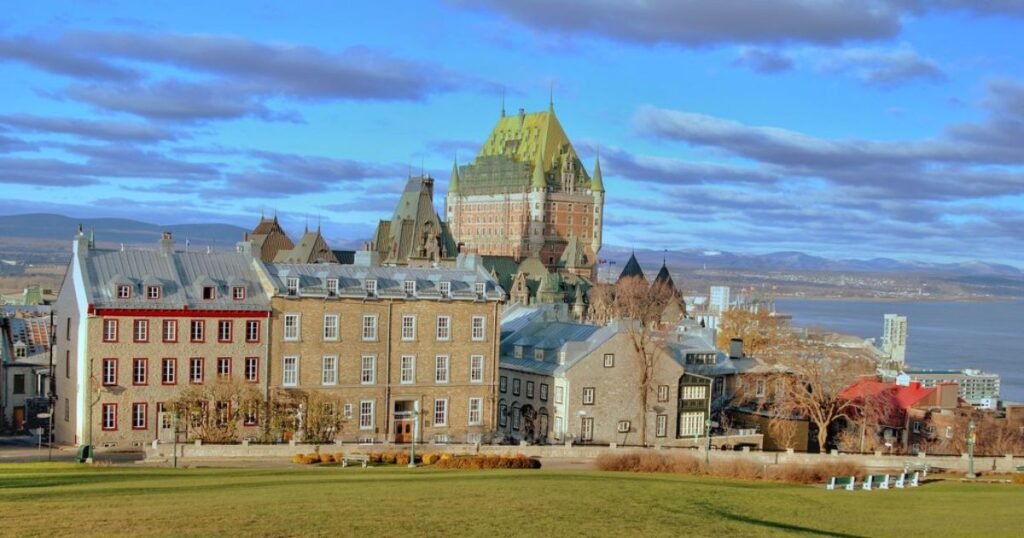
Fort Montmorency is a lesser-known but historically significant site near Quebec City. It overlooks the stunning Montmorency Falls and played a role in the French and British struggle for control of Canada.
Historical Significance: In 1759, during the Siege of Quebec, British forces under General Wolfe used the fort as a strategic position to launch attacks on the French, leading to the pivotal Battle of the Plains of Abraham. Though the British suffered setbacks here, their eventual victory shifted the course of Canadian history.
Best Time to Visit: May to October, when the weather is warm, and the falls are most impressive.
Travel Tips:
- Transportation: Accessible by car from Quebec City, or take a guided tour.
- Accommodation: Stay in Old Quebec for a mix of history and luxury.
- Local Customs: Pair your visit with a cable car ride over the falls for breathtaking views.
14. Dawson City, Yukon

Dawson City is a well-preserved gold rush town located in the Yukon Territory. It captures the spirit of the Klondike Gold Rush that brought thousands of fortune-seekers to Canada’s north in the late 19th century.
Historical Significance: Dawson City was the epicenter of the Klondike Gold Rush, which began in 1896. At its peak, the town boomed with prospectors, traders, and adventurers, forever transforming the region.
Best Time to Visit: June to September, when the weather is mild, and most attractions are open.
Travel Tips:
- Transportation: Reachable by plane from Whitehorse or via the Klondike Highway.
- Accommodation: Stay in historic hotels or bed-and-breakfasts in Dawson City.
- Local Customs: Experience the Midnight Sun and take part in the town’s lively gold rush reenactments.
15. Batoche National Historic Site, Saskatchewan
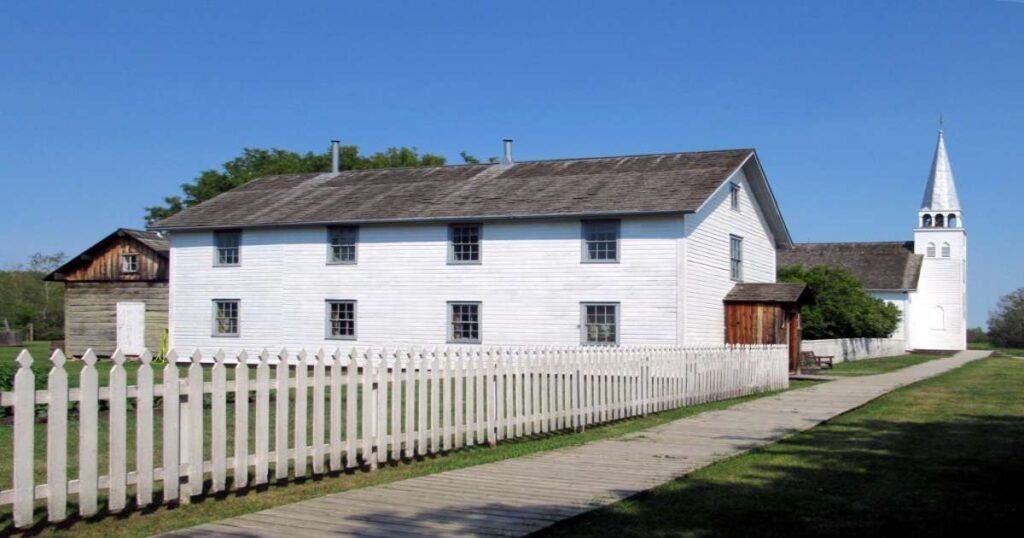
Batoche is a significant Métis cultural and historical site located in Saskatchewan. It was the site of the final battle of the North-West Rebellion of 1885.
Historical Significance: The Battle of Batoche was the climactic battle between the Métis, led by Louis Riel, and the Canadian government. The defeat of the Métis here marked the end of the rebellion and had lasting effects on the Métis community and Canadian politics.
Best Time to Visit: May to September, when the site is open and reenactments are held.
Travel Tips:
- Transportation: Accessible by car from Saskatoon.
- Accommodation: Stay in nearby Prince Albert or camp in Batoche for an immersive experience.
- Local Customs: Learn about Métis culture and history through exhibits and guided tours at the visitor center.
Also Read: Top Historical Sites In The USA
Conclusion:
Canada’s historical sites reflect the diverse cultures, conflicts, and triumphs that have shaped the country’s identity.
From Indigenous heritage and European colonization to gold rush towns and revolutionary battles, each location offers a unique window into Canada’s past.
Whether you’re an avid history buff or simply curious about the country’s roots, these 15 historical sites provide a rich and engaging journey through time.
FAQs:
1. What is the best time to visit historical sites in Canada?
Most historical sites are best visited between May and September when the weather is warmer, and the sites are fully operational.
2. Are the historical sites in Canada accessible by public transportation?
Many sites, especially those in major cities like Quebec City, Montreal, and Toronto, are accessible by public transportation. However, more remote sites, such as L’Anse aux Meadows and Prince of Wales Fort, require more planning and may be best reached by car or guided tours.
3. Do I need a guide to visit historical sites in Canada?
While you can explore most sites on your own, guided tours are highly recommended for gaining deeper insights into the history and significance of these places.
4. Are there any entrance fees for historical sites in Canada?
Many historical sites, particularly those managed by Parks Canada, charge a small entrance fee. Be sure to check the official websites for up-to-date information on fees and hours of operation.
5. Can I combine historical tours with outdoor activities?
Yes, many historical sites, like those in Banff or along the Rideau Canal, offer opportunities for hiking, boating, or other outdoor activities alongside your historical exploration.

